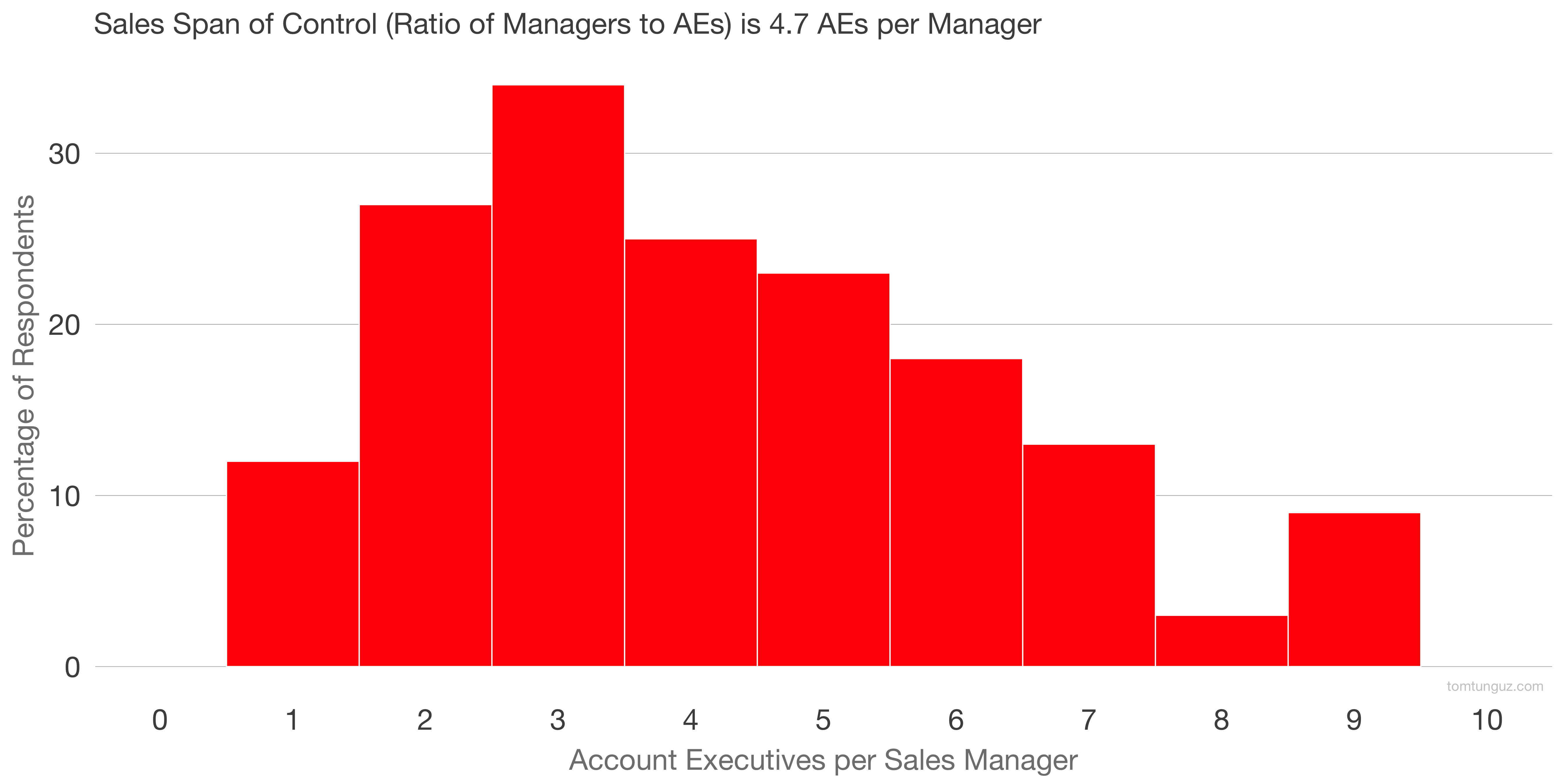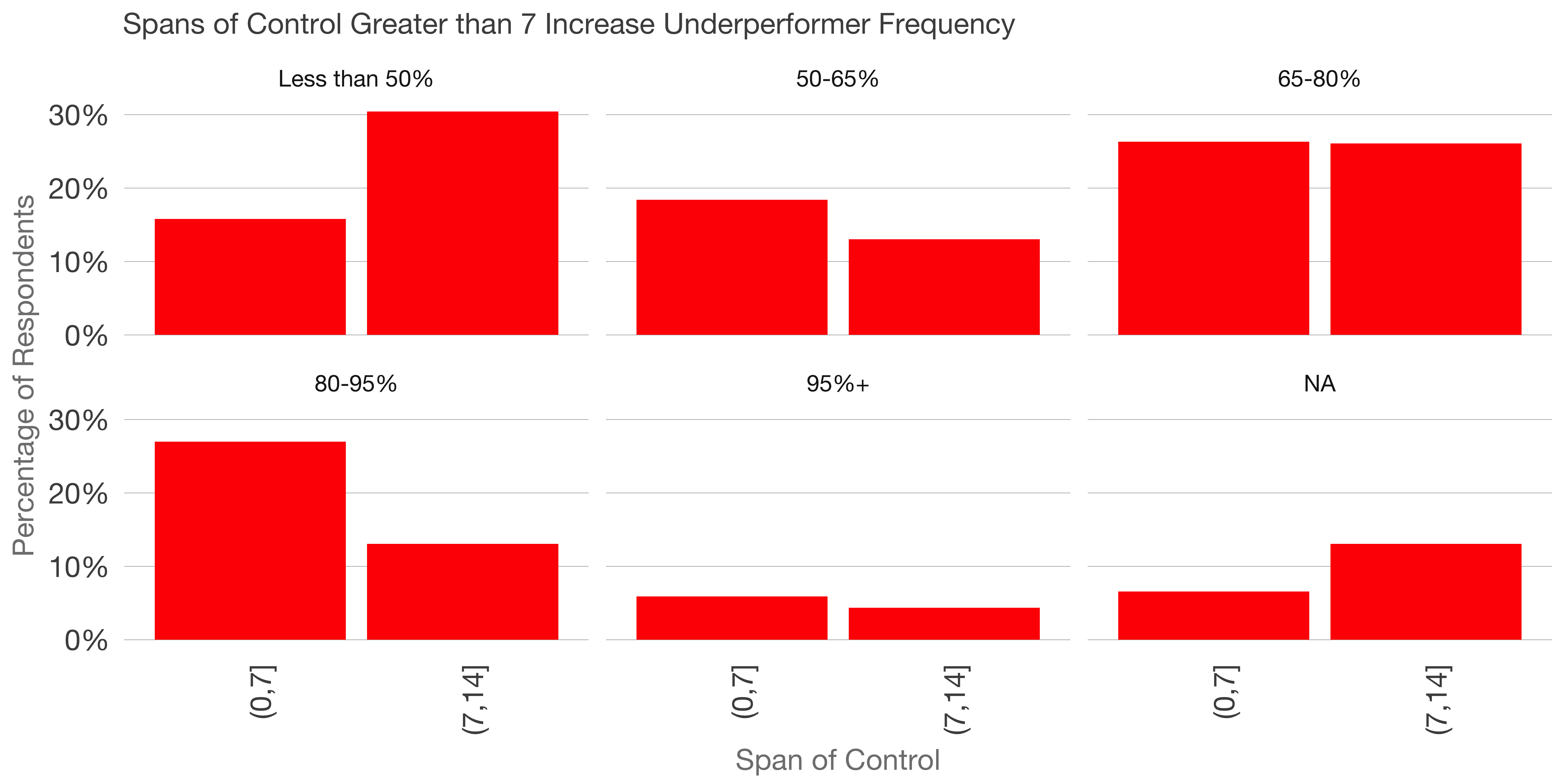This post is part of a series leading up to SaaS Office GTM Edition on June 24 in which we’re reviewing the results of the 2020 Redpoint GTM survey. Today, we’re answering the question: how should you structure your sales teams for maximum performance?
First, let’s introduce a concept called span of control. A span of control of 7 means, on average, each manager has seven people reporting to her. I’ve seen teams with spans of control ranging from 1 to more than 40.
Different departments operate with different averages, but the limiting factor tends to be the number of people a manager can coach successfully.

Across the respondent base of 507 people, the average span of control (Soc) is 4.7, with a skew toward smaller teams. The most common SoC is 3.

If we look at AE quota attainment by SoC, some interesting patterns emerge. Let’s take a look at the top-left chart. Here’s how to read it. For teams with SoC <=7, 18% achieved less than 50% of quota. 34% achieved of teams with spans of control > 7 whiffed their number. Squads with SoC > 7 attain at less than 50% of quota twice as frequently.
If we take the bottom left chart, we see that it’s twice as common to see AE teams attain 80-95% of quota if the SoC <=7. Smaller, tighter crews are more likely to outperform.
There’s no way to prove causation, however. There are other contributing factors. Hypergrowth companies may hire a bunch of managers to scale teams. During the hyper-growth phase, the SoCs may be small because there are many managers and fewer AEs.
AE experience matters, too. More senior sales teams need less coaching, so it would be interesting to cut this data by AE seniority. Last, the expertise and skill of the manager matter a great deal.
The data suggests that smaller teams are likelier to perform better, and adds another data set supporting a SoC of 7 or less.